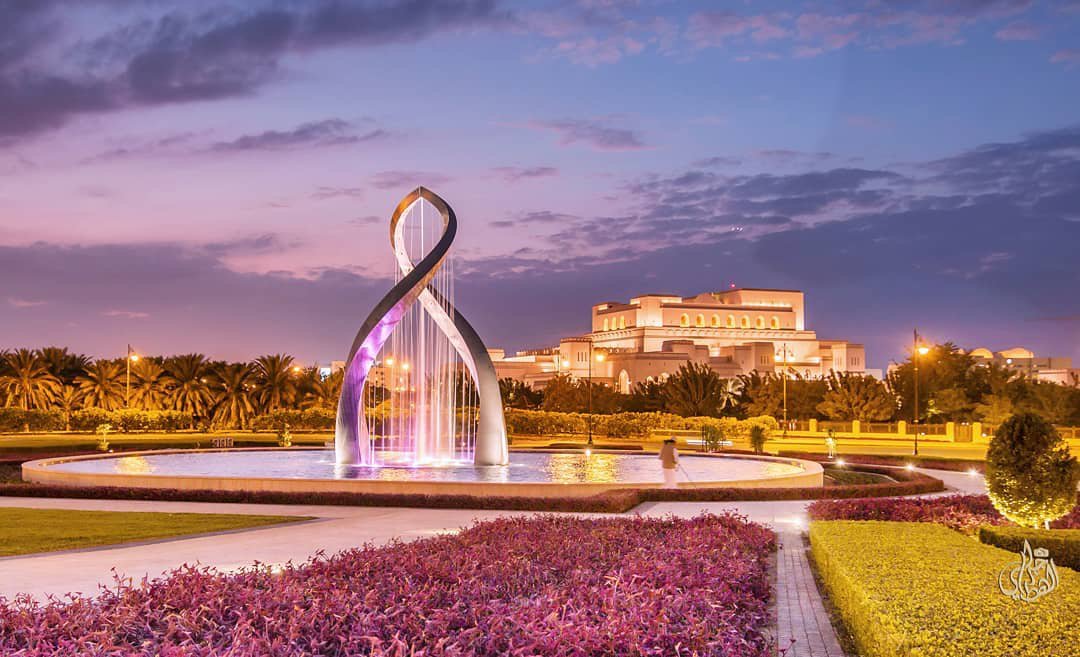

PHOTO BY JABER AL HATTALI -- Muscat: In recent years, the Sultanate of Oman has laid particular emphasis on the development and promotion of the tourism sector considering its importance as a promising sector and an important contributor to the national economy. The country aims to increase the contribution of tourism's sector to GDP by actively seeking to attract more inbound tourists and reaching more markets that are diverse.
Given the current geopolitical climate, Oman can not only market itself as a safe and tranquil destination but also compete with other GCC states seeking to boost their own share of tourism revenues.
As part of the World Tourism Day, which falls on September 27, the National Centre for Statistics and Information (NCSI) has prepared a bulletin covering information and statistical data on the development of the tourism sector in the Sultanate, in order to review the impact of tourism in the economy and its contribution towards advancing the economic development.
The bulletin contains indicators for Omani tourism sector during the period (2013-2017) as well as the application of Tourism Satellite Accounts (TSA), which represents a new statistic methodology for organizing the tourism statistics data. All the necessary statistical data were provided by the ministries, government bodies and private institutions.
The Royal Oman Police, the Ministry of Tourism and Oman Airports Management Company have also extended their supportive efforts. The bulletin summarizes all the data under five General Indicators of Tourism Statistics for the years 2013 – 2017, namely, Inbound Tourism, Outbound Tourism, Tourism satellite Account, Accommodation Services, and Salalah Tourism Season's Visitors.
According to NCSI statistics, the number of visitors to the Sultanate nearly doubled during the last five years from 2013 to 2017. The percentage of visitors per day rose 1.6 per cent to 885,810 visitors in 2017 compared to 2016. The total inbound tourism expenditure reached RO 342.3 million in 2017, a 6.1 per centincrease over RO 322.5 million in 2016, with the average expenditure per visitor reaching RO 105.1. This is a significant increase of 4.5 per cent compared to 2016 when the total expenditure per visitor totaled RO 100.6.
Accommodation services accounted for 34.0 per cent of inbound tourism expenditure, followed by air transport services at 27.5 per cent, food and beverages services at 15.1 per cent, and shopping at 11.4 per cent. The total number of outbound tourism rose by 48.1 per cent between 2013 and 2017, totaling 6.4 million. Total outbound tourism expenditure reached RO 462.7 million in 2017, which was a 5.6 per cent decrease over RO 490.3 million in 2016.
In 2017, total tourism production in Oman totaled RO 1.25 billion, of which RO 342.3 million, or 27.4 per cent, was from inbound tourists, while the remaining RO 909.1 million, or 72.6 per cent, was derived from domestic tourism. This figure included receipts from the national carrier, Oman Air, and travel agencies – regardless of the final destination.
Total direct value added reached RO 728.3 million in 2017, which was a 1.9 per cent increase over RO 714.9 million in 2016. The year 2015 witnessed a significant increase in direct value added from RO 689.5 million in 2014 to RO 732.2 million in 2015. This increase is due to the increase in value added of some activities, as restaurants activity.
In 2017, the total number of hotels reached 359, which consisted of 17 five-star hotels, 24 four-star hotels, 26 three-star hotels, 49 two-star hotels and 243 units classified as others, which includes one-star hotels, unclassified hotels, guesthouses and hotel apartments. Since 2013, the number of five-star hotels has actually increased from 12 to 17, while the number of four-star hotels grew from 22 to 24, while the number of three-star hotels dropped from 28 to 26 and the number of two-star hotels dropped from 52 to 49, while other accommodations increased from 152 to 243.
The total revenue generated from Hotel activity reached RO 236.0 million, with a growth of 2.5 per cent in 2017. In recent years, hotel occupancy rates in the Muscat Governorate have also slightly lower from 61.0 per cent in 2013 to 55.3 per cent in 2017. The total number of visitors during the Salalah Tourism season reached 645 thousand in 2017, a decrease of 1.2 per cent compared to the number of visitors in 2016, which reached 653 thousand visitors.
However, there was a 26.8 per cent jump in total visitors between 2015 and 2016 from 515 thousand to 653 thousand. Of the total visitors in 2017, 71.1 per cent of visitors were Omani, followed by 8.9 per cent from the UAE. The number of visitors from the GCC increased by only 2.9 per cent in 2017 compared to the high growth recorded in 2016 of 40.4per cent. The number of visitors from Kuwait decreased by 15.1 per cent in 2017 while visitors from Saudi Arabia increased by 23.9 per cent.
The total expenditure for visitors during the Salalah Tourism season was RO 66.3 million in 2017, an increase of 1.0 per cent compared to RO 65.7 million in 2016. The total number of nights spent in Salalah during Salalah Tourism season was 4.35 million nights in 2017, a decrease of 1.1 per cent, compared to 4.40 million nights in 2016. Omanis accounted for 78.0 per cent, followed by UAE nationals at 9.1 per cent and Saudis at 3.9 per cent during the Season. --ONA
Oman Observer is now on the WhatsApp channel. Click here



